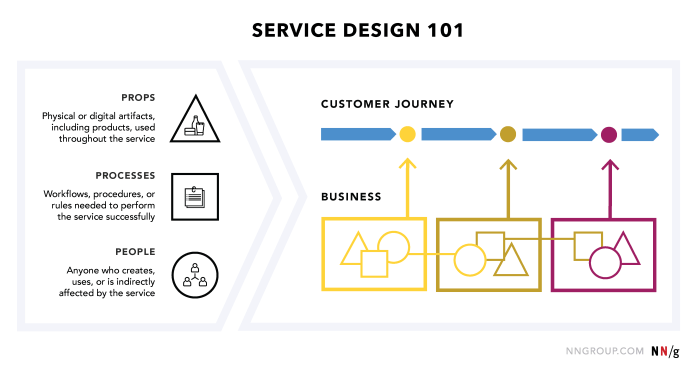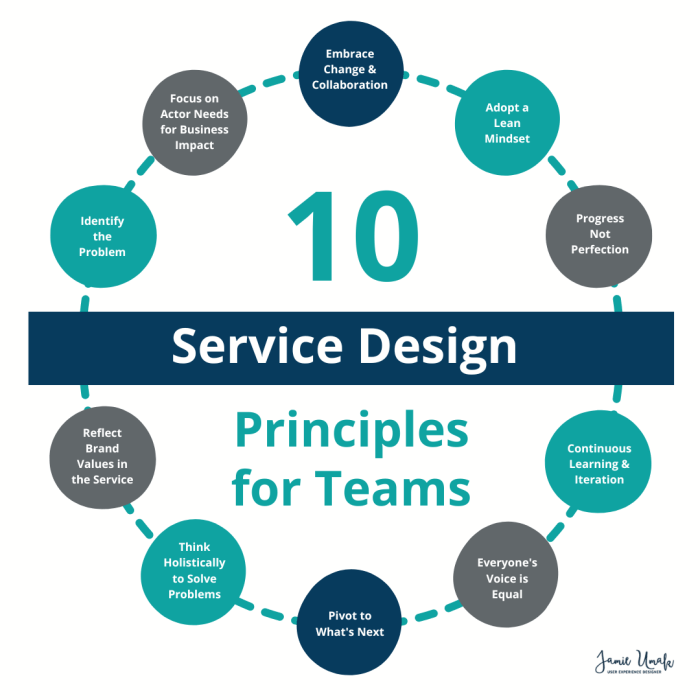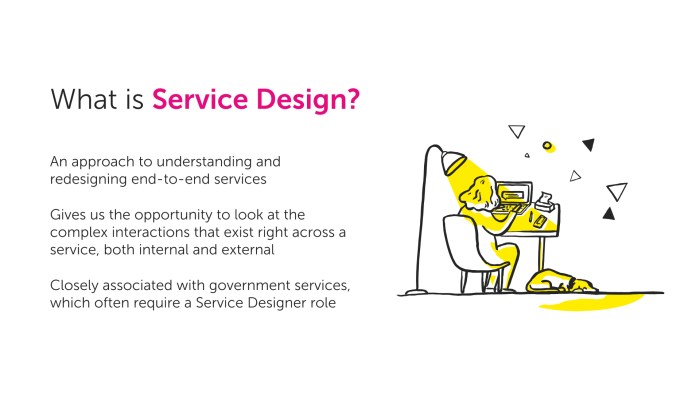Crafting Seamless Experiences: Exploring the World of Service Design
Service design is not just a concept; it's a transformative journey that businesses embark on to enhance customer experiences. As we delve into the realm of service design, we uncover the art of creating seamless interactions that leave a lasting impact on users.
Throughout this exploration, we will unravel the core principles, delve into the intricate process, and uncover the challenges that come with implementing service design strategies. Join us on this enlightening voyage into the world of service design.
Definition of Service Design

Service design in the context of business and customer experience involves the creation and improvement of services to meet the needs of customers effectively and efficiently. It focuses on designing processes, interactions, and touchpoints to deliver a seamless and satisfying experience for users.
Importance of Service Design
Service design plays a crucial role in creating seamless customer journeys by identifying pain points, optimizing processes, and enhancing user interactions. By considering the entire service ecosystem, from initial contact to post-service follow-up, organizations can design experiences that are intuitive, accessible, and memorable.
- Service design helps in understanding customer needs and preferences, leading to tailored solutions that address specific pain points.
- It enables organizations to streamline processes, reduce friction, and increase efficiency, ultimately improving customer satisfaction and loyalty.
- Through service design, companies can differentiate themselves in the market by offering unique and innovative service experiences that set them apart from competitors.
Examples of Service Design Impact
Service design impacts user interactions in various ways, such as:
- Creating user-friendly interfaces that make it easy for customers to navigate and access information.
- Personalizing services based on customer preferences and behavior, enhancing the overall user experience.
- Implementing omnichannel strategies to provide a seamless experience across different touchpoints, ensuring consistency and continuity.
Principles of Service Design

Effective service design is guided by key principles that aim to enhance the overall customer experience and optimize service delivery. These principles focus on ensuring that services are user-centric, efficient, and tailored to meet the needs and expectations of customers.
Let's explore some of the fundamental principles that drive successful service design.
Empathy in Service Design
Empathy plays a crucial role in service design as it involves understanding and addressing the emotions, needs, and motivations of customers. By empathizing with users, service designers can create solutions that truly resonate with customers and provide meaningful experiences. This principle emphasizes the importance of putting oneself in the shoes of the customer to design services that are both intuitive and empathetic.
User-Centric Design in Service Delivery
User-centric design is a significant aspect of service delivery as it focuses on designing services around the needs and preferences of the end-users. By prioritizing user experience and feedback, service designers can create services that are easy to use, efficient, and tailored to meet customer expectations.
This principle underscores the importance of involving users in the design process to ensure that services are intuitive, accessible, and customer-friendly.
Process of Service Design
During the service design process, there are typical steps involved that help in creating effective and user-centered solutions. One crucial aspect is identifying customer needs and pain points, which is essential for designing services that truly meet the users' requirements.
Additionally, the iterative nature of service design plays a significant role in refining solutions and ensuring that the final outcome is optimized for user satisfaction.
Identifying Customer Needs and Pain Points
In order to identify customer needs and pain points during the design phase, it is important to conduct thorough research and gather feedback from users. This can be done through methods such as surveys, interviews, and observation to understand what users are looking for in a service.
By analyzing this data, designers can pinpoint areas where improvements are needed and tailor the service to address specific pain points experienced by customers.
- Conduct user research to gather insights into customer preferences and behaviors.
- Utilize tools like customer journey mapping to visualize the user experience and identify pain points.
- Engage with users through prototyping and testing to validate assumptions and gather feedback.
Iterative Nature of Service Design
Service design is an iterative process that involves testing, refining, and improving solutions based on user feedback. This iterative approach allows designers to continuously optimize the service and ensure that it meets the changing needs and expectations of customers. By incorporating feedback at each stage of the design process, designers can create services that are user-centric and effective in addressing customer needs.
- Iterate on service prototypes based on user testing and feedback to enhance usability.
- Collaborate with cross-functional teams to gather diverse perspectives and insights for improvement.
- Regularly review and analyze data to identify trends and areas for enhancement in the service design.
Tools and Methods in Service Design
Service design involves the use of various tools and methods to create effective and user-centric services. These tools help designers understand customer needs, visualize the service journey, and test prototypes to ensure the service meets expectations.
Customer Journey Mapping
Customer journey mapping is a common tool used in service design to visualize the end-to-end experience of a customer interacting with a service. It helps identify pain points, opportunities for improvement, and moments of delight throughout the customer's journey.
- Allows designers to gain insights into customer interactions and emotions at each touchpoint.
- Helps in identifying areas where the service can be enhanced or streamlined.
- Enables designers to align service delivery with customer expectations.
Prototyping and Testing
Prototyping and testing are essential steps in service design to validate ideas, gather feedback, and refine the service before full implementation. By creating prototypes and testing them with real users, designers can ensure that the service meets user needs effectively.
- Prototyping allows designers to quickly iterate and improve service concepts.
- Testing with users provides valuable insights into usability, functionality, and overall user experience.
- Helps in identifying and addressing potential issues or gaps in the service design.
Co-Creation with Customers
Co-creation involves collaborating with customers in the design process to ensure that the service meets their needs and expectations. By involving customers in the design process, designers can gain valuable insights, co-create solutions, and build services that resonate with the target audience.
- Empowers customers to provide input and contribute to the design process.
- Ensures that the service is user-centric and aligned with customer preferences.
- Fosters a sense of ownership and loyalty among customers who have participated in the co-creation process.
Challenges in Service Design Implementation
Implementing service design strategies can be a complex process that involves various challenges. It is essential to address these challenges effectively to ensure the successful implementation of service design within an organization.
Common Challenges Faced in Service Design Implementation
- Lack of Understanding: One of the common challenges is the lack of understanding among stakeholders about the importance and potential benefits of service design.
- Resistance to Change: Implementing service design often requires changes in processes and workflows, leading to resistance from employees who are comfortable with the existing ways of working.
- Resource Constraints: Limited resources, both in terms of budget and skilled personnel, can hinder the effective implementation of service design initiatives.
- Organizational Silos: Siloed departments and lack of cross-functional collaboration can impede the seamless integration of service design across the organization.
Importance of Aligning Organizational Goals with Service Design Objectives
Aligning organizational goals with service design objectives is crucial for ensuring that the implementation process is focused and aligned with the overall vision of the organization. By setting clear objectives that are in line with the broader organizational goals, businesses can ensure that service design initiatives contribute directly to strategic outcomes.
Strategies for Overcoming Resistance to Change during Service Design Implementation
- Communication and Engagement: Effective communication with stakeholders and involving them in the design process can help in addressing resistance to change.
- Training and Development: Providing training and development opportunities to employees can help in preparing them for the changes brought about by service design initiatives.
- Leadership Support: Strong leadership support and advocacy for service design can help in driving the change and overcoming resistance within the organization.
- Pilot Projects: Implementing small-scale pilot projects can help in demonstrating the benefits of service design and gaining buy-in from stakeholders before full-scale implementation.
Last Recap

In conclusion, service design serves as the cornerstone for businesses looking to elevate their customer experiences. By focusing on empathy, user-centric design, and iterative processes, organizations can craft services that resonate with their audience. As we navigate through the complexities of service design implementation, remember that aligning organizational goals and embracing change are key to driving success in this dynamic landscape.
Top FAQs
What is the importance of empathy in service design?
Empathy is crucial in service design as it allows businesses to truly understand their customers' needs and emotions, leading to the creation of more meaningful and impactful services.
How can organizations overcome resistance to change during service design implementation?
Organizations can overcome resistance to change by fostering a culture of open communication, providing adequate training and support, and showcasing the benefits of the new service design strategies.
Why is co-creation with customers essential in service design?
Co-creation with customers ensures that services are tailored to meet their specific needs and preferences, resulting in higher satisfaction and loyalty.